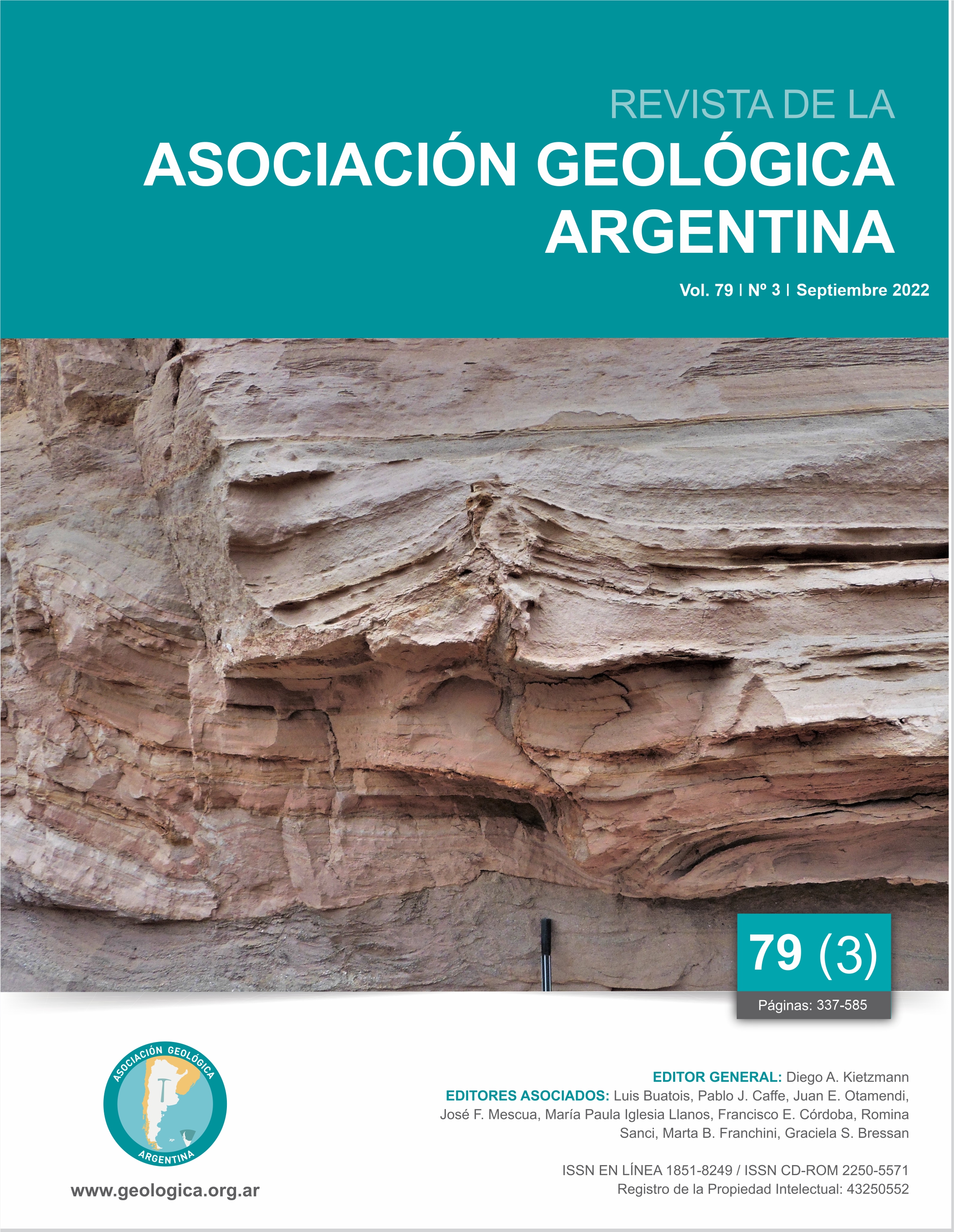Soft-Sediment Deformation Structures as indicators of Quaternary tectonics in the southern Lerma Valley, NW Argentina
Main Article Content
Abstract
The Lerma valley is the easternmost intermontane basin of the Cordillera Oriental in the southern Central Andes of Argentina. This is a seismically active region subject to compressional tectonics. Although the instrumental record in the basin displays seismic activity characterized by small-magnitude earthquakes, an Mw=6.2 earthquake occurred in 2010. Furthermore, several M>5 earthquakes struck the surroundings during the last centuries affected and the study area falls within the region of influence. Despite of this, most of the potential seismogenic sources within the valley have not been identified and characterized yet. South of the basin, the presence of soft-sediment deformation structures (SSDS) in Upper Pleistocene lacustrine sediments has been recognized and hypothetically related to seismic activity. The areal extent of the SSDS is several kilometers and the strata containing these deformation structures are laterally continuous and characterized by the occurrence of undeformed beds below and above the deformed bed. In this contribution, we present new field data and morphological analysis of the SSDS, as well as detailed stratigraphic sections and analyses of susceptibility to liquefaction of the sediments involved. Considering the sedimentological characteristics, climatic context, geodynamic context, and the similarity between the studied structures with seismic-related SSDS, we propose paleo-earthquakes as the main trigger of the observed deformation. Finally, we highlight the use of this kind of structures as indicators of paleoseismic activity in intraplate regions with a lack of surface manifestations of deformation and with low to moderate seismicity and long recurrence intervals.
Article Details

This work is licensed under a Creative Commons Attribution-NonCommercial 4.0 International License.
Nota de copyright
Los autores conservan los derechos de autor y garantizan a la revista el derecho de ser la primera publicación del trabajo licenciado según una licencia de atribución Creative Commons que permite a otros compartir el trabajo con el reconocimiento de la autoría y de la publicación en la que se publicó por primera vez.
Declaración de privacidad
Los nombres y direcciones de correo electrónico introducidos en esta revista se usarán exclusivamente para los fines declarados por esta revista y no estarán disponibles para ningún otro propósito u otra persona.

